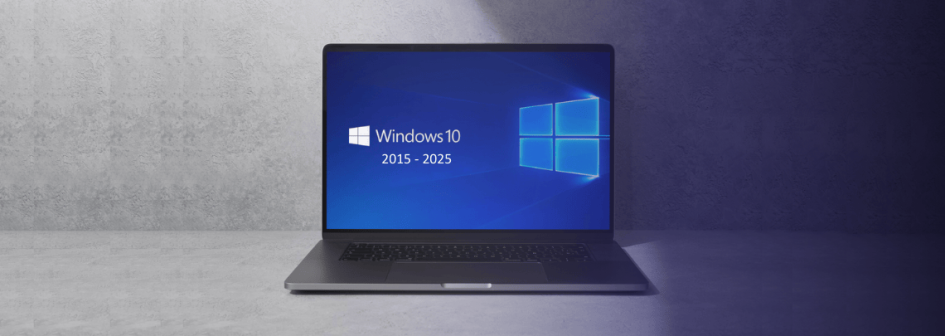Still on Windows 10? Here’s what you need to consider today
26 March 2025By Jenna Polson | Cyber Security, News | No Comments
After a decade of powering businesses, Microsoft’s Windows 10 operating system will reach its end of life this October. While that may seem a long way off, it raises important questions for your IT risk and asset strategies that you won’t want to rush.
So what does ‘end of life’ really mean for you business, and what options should you be considering today?
Not sure if this affects you?
Navigating through Start > Settings > System > About, and scroll down to the Windows Specification section. The operating system is referred to as ‘Edition’. Remember that different devices used within your business may be running different operating systems.
What does ‘end of life’ mean?
From 14 October 2025, Microsoft will no longer be supporting the Windows 10 operating system (or OS). This means:
- No further software updates (patches) to improve security and functionality
- Microsoft will not accept support cases for Windows 10-related issues.
Currently, Microsoft releases patches every week to address the latest security vulnerabilities. While your operating system will still function after its end of life, you can have less confidence in its security and performance over time.
Let’s talk about your options:
- Risk it
- Upgrade on existing devices
- Upgrade with new devices
- Seize the opportunity
Option 1: Risk it
What are the risks if you do nothing? If your device is working fine on October 13th, it probably will be on the 15th too. But by October 22nd, your device will have missed its weekly patch, and will be exposed to the latest security vulnerabilities. That exposure will increase each week, as cyber-attackers target the new gaps in your shield.
Non-Microsoft software (like those running your accounting or business operations) can also rely on the functionality of your operating system to work effectively. You may find that those providers withdraw updates and support options once your OS is out of date, impacting whole business functions.
You’d also need to check whether your business has requirements to maintain up-to-date software for regulatory, contractual or insurance purposes. If so, taking this option could see you exposed to even greater business risks.
However, there may be short-term circumstances (such as an upcoming acquisition or team restructure) where a business justifies postponing their OS upgrades. In this case, ensure you understand your risks, and your disaster recovery solution is updated and ready.
Option 2: Upgrade to Windows 11 licenses on existing devices
Perhaps you have Windows 10 running on devices that are less than 3 years old. You want to protect your business by upgrading their OS, but aren’t ready to replace the hardware. Provided they meet the minimum requirements, installing Windows 11 on your existing devices may be the right option for you.
The good news is, Microsoft are helping with license costs. You’ll only have to pay for the time required for your IT partner to install and configure the new OS for your needs. Businesses partnering with Bigfish Technology can expect a quick process, scheduled to minimise disruption.
Option 3: Upgrade to Windows 11 with new devices
Are your devices more than 3 years old? Your best option is probably to replace them with new devices, with Windows 11 pre-installed. While this may be sooner than you’d planned, it’s still likely to save you money in the long run compared to Option 2.
A study of over 2,000 SMEs found that the cost of using devices past their 4th birthday is equivalent to purchasing two new devices. This is because after the 4-year mark, devices are 2.7 times more likely to need repair.
In addition to mitigating the cost of repair and productivity loss, upgrading your devices provides access to higher security, performance and functionality features. That’s the opportunity to reduce risks and improve your teams’ performance sooner.
Option 4: Seize the opportunity for something bigger
Perhaps you’re already weighing up an IT transition for your business. Maybe you’re considering a shift between physical and cloud-based infrastructure. Or your team would value the flexibility of laptops, rather than desktop computers.
The end of the Windows 10 operating system may be a catalyst for those decisions. While you’re considering your response to this OS transition, it’s worth reviewing your IT environment more holistically. If this change makes new IT investment inevitable, be sure it’s made with your longer-term strategy in mind.
At Bigfish Technology, we help take businesses to the next level. We focus not only on risk mitigation, but proactive IT strategy, with your business goals front-of-mind.
What’s next for your business?


